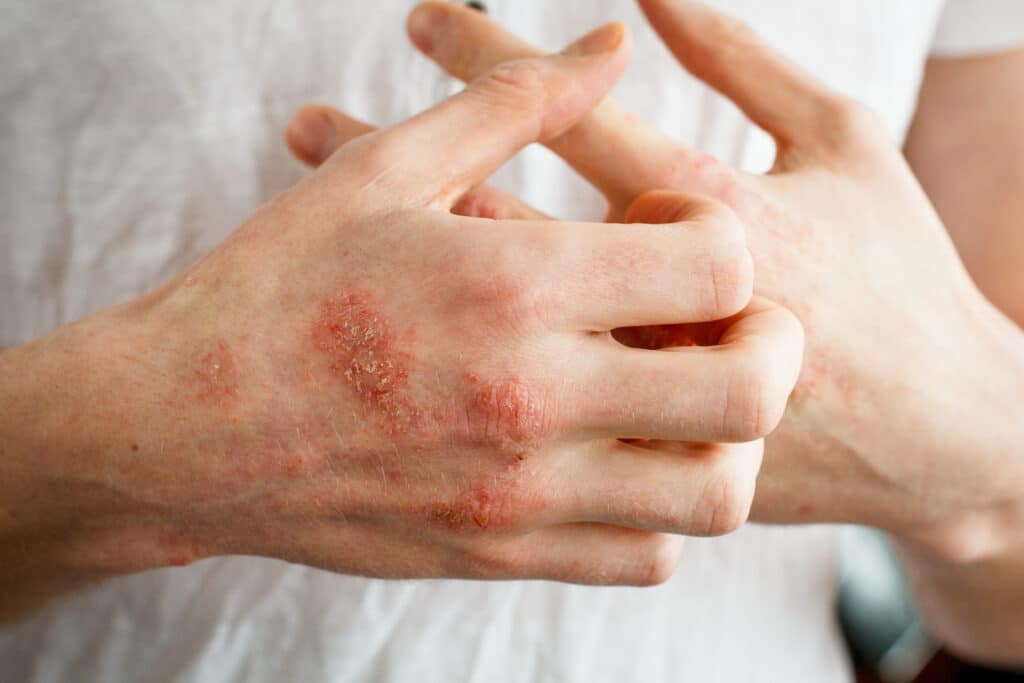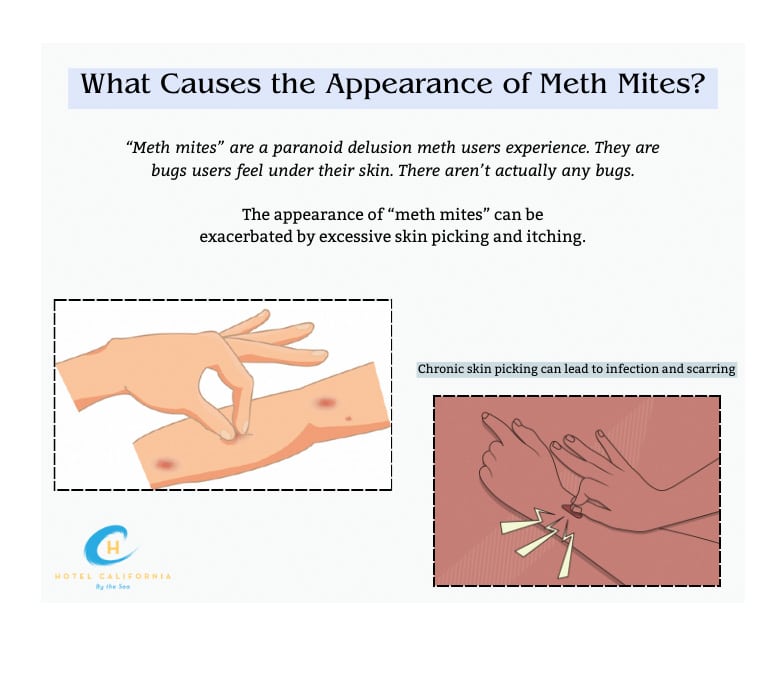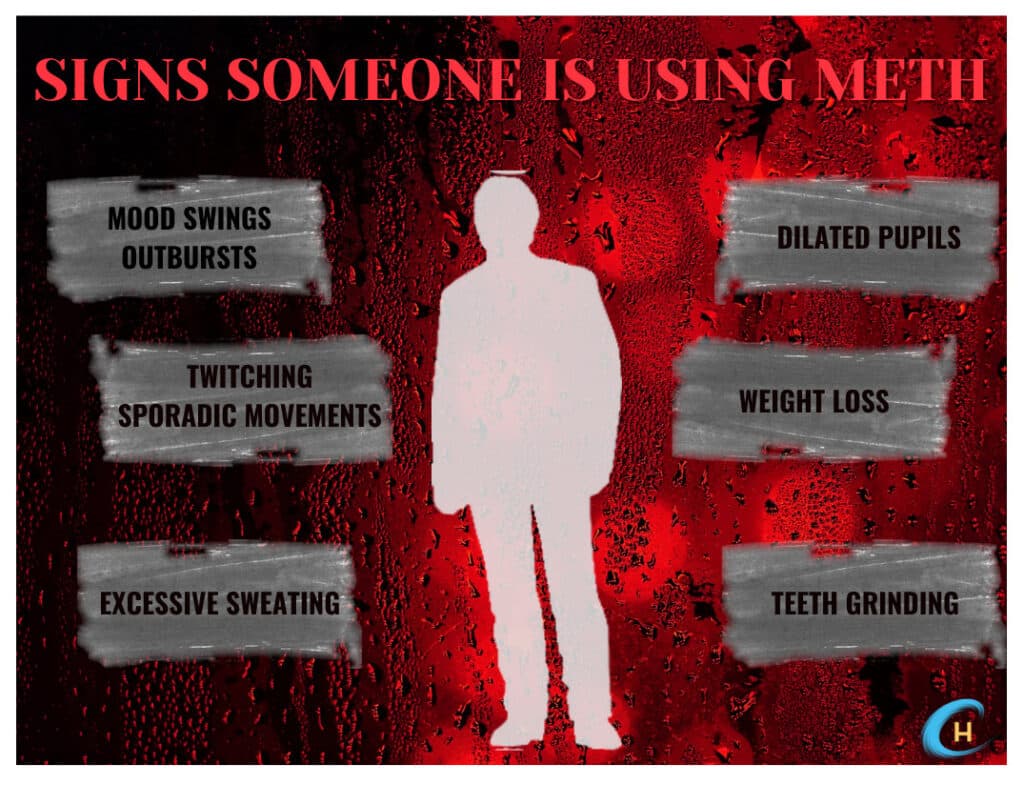What are Meth Mites?
Methamphetamine (meth) users experience a wide range of side effects and symptoms when the drug is being misused. One commonly known side effect is experiencing meth mites. Meth mites, or meth bugs, are not actual insects. They are imaginary bugs that meth abusers “feel” are crawling on and under their skin. These imaginary sensations are caused by the development of tactile hallucinations. This is another common side effect of meth abuse. Studies show about 43% of meth users with methamphetamine use disorder experience psychiatric symptoms, which includes hallucinations leading to the experience of meth mites.

Meth is a highly addictive stimulant substance with potent effects on the central nervous system. According to the Centers for Disease Control and Prevention, the rate of fatal overdoses involving meth or other stimulants has significantly increased. Research has found an estimated 2 million Americans age 12 and older, have used meth in the past 12 months. Meth abuse can lead to increased breathing rate, rapid or irregular heartbeat, elevated blood pressure, increased body temperature and a heightened sense of wakefulness. Delusions, hallucinations and paranoia are also common long-term effects of meth use and lead users to believe they can see and feel bugs crawling on them.
The stimulant substance can be smoked, snorted, injected, or orally ingested. Smoking or injecting meth allows the drug to get into the bloodstream very quickly compared to other forms of taking the drug. Meth abusers often use the drug in a binge and crash pattern. During the binging phase, users forego food and sleep as they continue to use the drug. They can stay awake for several days. Lack of sleep causes the psychiatric symptoms that lead to meth mites.
What are Meth Mites?
Meth mites are the sensation of seeing and feeling bugs crawling in and under your skin. They are not actual bugs. Due to hallucinations and paranoia, meth users often begin to see and feel things that aren’t there. The technical terminology is called formication. Formication comes from the Latin word formicare, meaning to creep like an ant. Causes of formication include substance use, withdrawal from substances, co-occurring mental health conditions that involve psychosis, brain conditions and other medical conditions that affect your brain and body systems.
Prescription and recreational drugs are the most common causes of formication. Drug-induced formication is also often associated with delusions of parasitosis. This is a form of psychosis in which a person has delusions of belief that they are infested with parasites and claims to have seen bugs or worms crawling under or out of their skin.

Formication is a tactile hallucination that causes one to experience abnormal skin sensations similar to that of insects crawling over the skin. Tactile hallucinations occur when areas of the brain act like they are processing signals from the body, when in reality, they are not sending any signals. The brain acts like it is receiving these signals so that hallucinations feel completely real and the user’s reality is distorted. In some cases, the crawling sensation is due to increased body temperature which leads to sweating, oil on the skin and dehydration.
Not all meth users experience meth mites. But it is more common in those who use more drugs, use drugs for a longer period of time and have a more severe addiction to meth or other stimulants. Meth leads to many days without sleep or rest. The brain is unable to perform proper functions without rest and because of this, users begin to hallucinate seeing bugs that aren’t there. Meth mites result in obsessive picking and scratching of the skin as users attempt to relieve the uncomfortable sensation. Other sensations you can experience with meth mites in burning, tingling, numbness and cold.

Meth Sores
Meth sores are the aftermath of meth mites. Oftentimes, the sensation of meth mites can be so overwhelming, people begin to scratch intensely. They pick at the skin in an attempt to relieve the pain and feelings of crawling bugs. This results in what is known as meth-induced sores. Red skin, blotchy skin and even open wounds can form due to severe skin picking. It can occur on the face, arms and legs. And because the person is actively using drugs, they suffer from a lack of personal hygiene, a compromised immune system and a high risk of infection, resulting in the inability to properly heal.
Signs of Meth Sores
- Users scratching at their skin with nails
- Users use scissors, knives and other sharp objects to pick at the skin when it becomes intolerable
- Users digging into open wounds
- Users have dry, red, bumpy, splotchy and highly irritated-looking skin
- Users scratching at their wounds to the point of developing lesions that can become infected
Other possible causes of meth sores come from the body’s ability to identify the drug as toxic. The body then attempts to remove the substance from its system through the skin pores. This can also lead to excessive scratching and skin picking.
Meth sores are not contagious. However, they are not a pleasant sight to witness. There is no formal treatment for meth sores other than general wound care. This may consist of topical ointments and oils to help ease the pain. The only way to stop meth mites and meth sores is to stop using meth completely.
Check Your Insurance Coverage for FREE
Find out if your insurance covers addiction treatment in minutes. We accept most insurance!
Other effects of Meth on the general appearance of a User
- Meth mouth – A 2015 study found that about 96% of meth users had cavities, untreated tooth decay and other poor dental hygiene practices. About 1.3 of meth users have six or more missing teeth. It causes teeth to blacken, rot and eventually fall out.
- Pale appearance
- Bumps and raised textures on the skin
- Wrinkles and fine lines
- Dry and rough skin
- Gaunt and skeletal-looking face
- Peeled skin with infections
- Weak appearance due to weight loss
- Untidy and lack of personal hygiene
Reach out to Hotel California by the Sea
We specialize in treating addiction and other co-occurring disorders, such as PTSD. Our Admissions specialists are available to walk you through the best options for treating your addiction.
Treatment for Methamphetamine Use Disorder
An addiction to meth and other powerful stimulant substances can result in dangerous side effects and symptoms. One of the most common symptoms is psychosis which can result in delusions, paranoia and tactile hallucinations. These psychological side effects can lead to the sensation of seeing and feeling things that aren’t really there. This is especially true of meth mites and meth bugs. Hotel California by the Sea provides a well-rounded substance use disorder program specializing in meth addiction. As one of the most powerful stimulant substances, overcoming an addiction to meth is the most successful through a professional behavioral health program.
At Hotel California by the Sea, we provide a full range of programs including medical detox, residential programming and PHP and IOP programs. Clients will make their way to one of these programs based on their need for care. Evidence-based treatment methods including cognitive therapies: CBT, DBT and EMDR therapy provide intensive treatment for clients throughout their recovery process. We also have unique programs including marriage and family counseling in which clients work in group settings to unpack and understand how their addiction has affected their loved ones. Our substance addiction treatment program helps clients overcome drug addiction and live a healthier life in sobriety.
References:
https://www.ncbi.nlm.nih.gov/pmc/articles/PMC6048360/
https://www.psychologytoday.com/us/blog/odd-curious-and-rare/200911/formicationhttps://my.clevelandclinic.org/health/symptoms/23960-tactile-hallucinations-formication
https://firststepbh.com/blog/what-are-meth-mites-why-do-they-occur/
https://www.addictiongroup.org/drugs/illegal/crystal-meth/sores/
https://firststepbh.com/blog/what-are-meth-mites-why-do-they-occur/
https://www.medicalnewstoday.com/articles/meth-face-sores#meth-scabs-and-meth-mites
https://addictionresource.com/drugs/crystal-meth/meth-sores/
https://www.samhsa.gov/meth
https://nida.nih.gov/research-topics/methamphetamine
